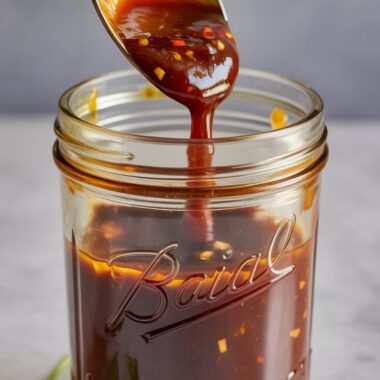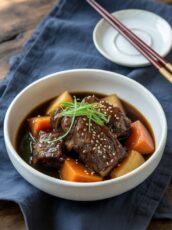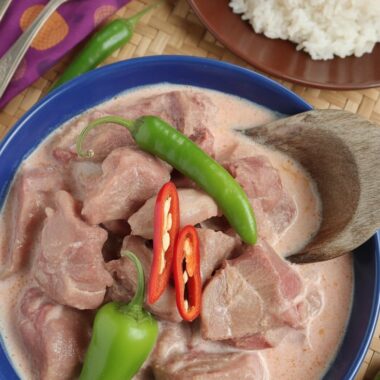There’s something about a skillet bubbling away with garlic, ginger, and sesame oil that feels like home to me. These Korean BBQ meatballs are my shortcut to comfort food on a weeknight. They simmer in a sticky-sweet, bulgogi-style sauce right on the stovetop—no oven preheating, no waiting forever—just thirty minutes to a glossy bowl of flavor.
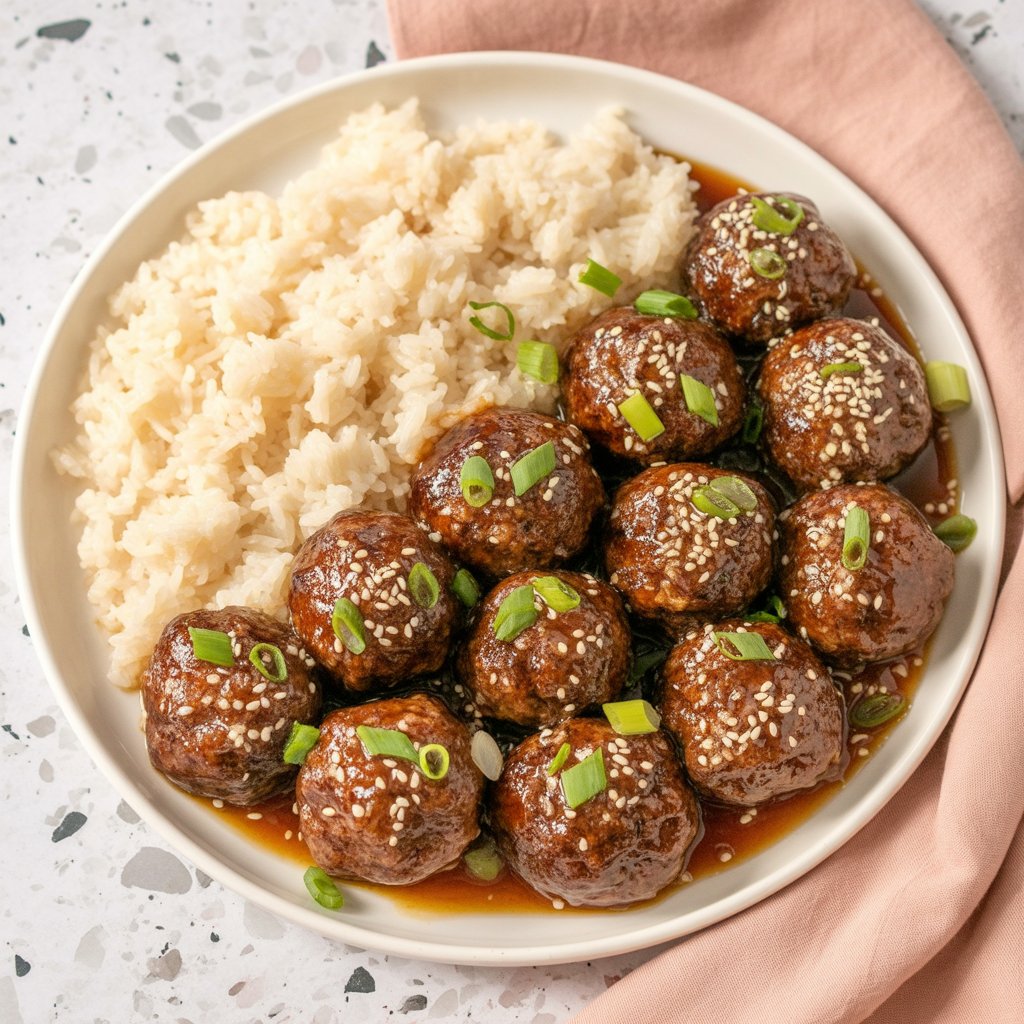
I usually serve them over steamed rice, and my family will fight for the extra glaze at the bottom of the pan. It’s the kind of dish that tastes like you spent all day on it, but really, it’s quicker than calling for takeout.
Why These Meatballs Always Work
I’ve tested plenty of meatball recipes, and the fridge rest trick is my favorite. Just 10 minutes in the fridge keeps them from falling apart in the sauce. That little pause gives the meat a chance to firm up, so they stay tender but hold their shape.
I also love that these meatballs cook directly in the sauce. No sheet pans to scrub later, no transferring back and forth. They soak up every bit of flavor as they simmer gently, almost like little dumplings.
On busy nights, I’ll throw together a quick bok choy stir-fry or crack open a jar of homemade kimchi to go with them. If I’m feeding a hungry crowd, I’ll add jammy eggs or cucumber salad on the side, and the table feels instantly fuller.
Ingredients You’ll Need
- Ground beef – I usually go for 80/20 beef because the fat keeps the meatballs juicy. Turkey or chicken works too, but you’ll want to add a touch more sesame oil for richness.
- Garlic, ginger, and green onions – My “holy trinity” for Korean-style cooking. I always keep these on hand because they build such a deep base of flavor.
- Gochujang – That spicy, slightly sweet fermented chile paste you’ll find in almost every Korean kitchen. Start with a spoonful and add more if you like it fiery. If I run out, I mix Sriracha with a little brown sugar—different, but it does the job.
- Tamari or soy sauce – Tamari is naturally gluten-free, but regular soy sauce is just fine. Either way, this is what makes the sauce salty and savory.
- Brown sugar & rice vinegar – The sweet-sour balance that keeps you going back for another bite.
- Sesame oil & sesame seeds – Nutty, toasty finishing touches that make the dish taste complete.
I’ll admit, once you stock up on gochujang and tamari, you’ll find yourself reaching for them in stir-fries, marinades, and even soups. They’re staples in my fridge.
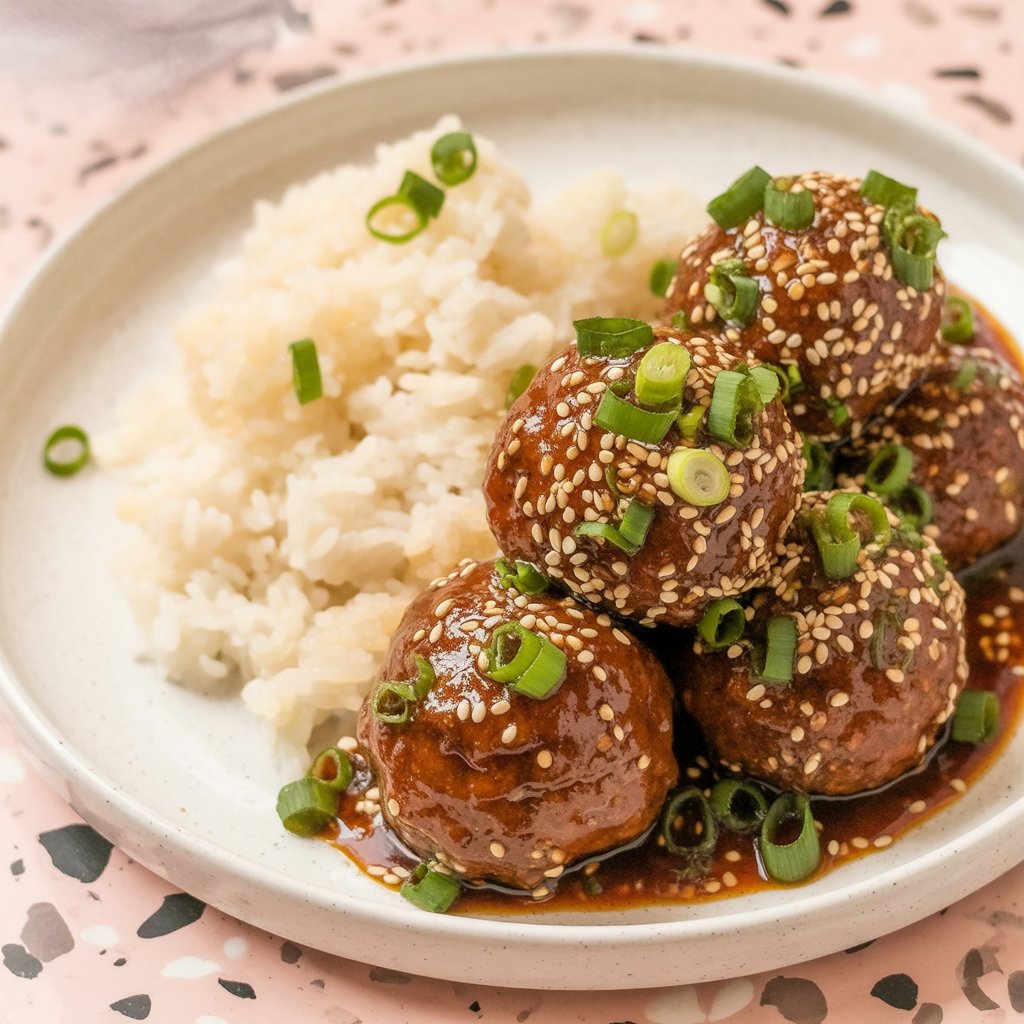
Step-By-Step: How I Make Them
- Mix the meatballs – I stir the beef, aromatics, tamari, gochujang, cornstarch, and pepper together gently. Over-mixing makes them tough, so I treat it like folding cake batter. Roll into golf-ball-sized meatballs and chill for 10 minutes.
- Start the sauce – Heat sesame oil in a skillet, sauté garlic until fragrant, then add tamari, water, brown sugar, and rice vinegar. It smells amazing already.
- Cook the meatballs – Nestle the chilled meatballs into the sauce, cover, and let them simmer for 10 minutes. They’ll poach gently and turn juicy.
- Thicken and finish – Stir in a cornstarch slurry, then simmer uncovered until the sauce turns glossy and clings to the meatballs. I always spoon sauce over them as they finish—it makes them shine.
- Garnish and serve – Scatter sliced green onions and sesame seeds on top. Serve over rice or noodles with all that extra glaze.
My Sauce Notes & Kitchen Tips
- Want it thicker? Add an extra splash of slurry or just let it bubble away a little longer.
- Too sweet? A tiny drizzle of extra vinegar balances it right out.
- Need more heat? Stir in an extra spoonful of gochujang—don’t be shy.
- Leftover sauce? Toss it with shredded chicken or drizzle it over roasted veggies the next day.
I’ve even brushed the glaze onto grilled steak once, and my friends thought I’d made a fancy Korean BBQ spread.

Storing & Freezing
- Fridge – Store leftovers in an airtight container for 3–4 days. I usually reheat them on the stovetop so the sauce warms evenly, but the microwave works fine for a quick lunch.
- Freezer – Freeze the cooked meatballs separately from the sauce for up to 3 months. The cornstarch in the sauce doesn’t thaw gracefully, so I make it fresh when reheating. If I do freeze the sauce, I leave out the slurry and add it later when reheating.
These are a lifesaver on nights I don’t feel like cooking—just thaw, reheat, and dinner’s done.
Korean BBQ Meatballs

Juicy, tender beef meatballs simmered in a glossy, bulgogi-inspired sauce — this stovetop recipe is weeknight comfort with a punch of Korean flavor. The sticky-sweet glaze has just the right balance of heat, making every bite irresistible over a bed of fluffy rice.
Ingredients
For the Meatballs
- 2 tbsp cornstarch
- 1–2 tsp gochujang (omit for milder flavor)
- 1 tsp ground black pepper
- 1 lb ground beef
- ½ cup green onions, minced
- 4 garlic cloves, minced
- 1-inch piece of ginger, grated
- 2 tbsp tamari or soy sauce
For the Sauce
- 3 tbsp brown sugar
- 2 tbsp rice vinegar
- 1 cup water
- 1/3 cup tamari or soy sauce
- 1 tbsp sesame oil
- 4 garlic cloves, minced
- 2 tsp cornstarch
- 1 tbsp water (for slurry)
For Garnish
- Sliced green onions
- Toasted sesame seeds
Instructions
- In a large mixing bowl, combine the beef, green onions, garlic, ginger, tamari, gochujang, cornstarch, and black pepper. Mix gently until everything just comes together — avoid overworking the meat.
- Shape the mixture into golf-ball-sized portions, about 20 in total, using a spoon or scoop. Place them on a tray and chill for 10 minutes to help them hold their shape.
- Meanwhile, warm sesame oil in a large lidded skillet over medium-high heat. Add the minced garlic and sauté for about a minute until fragrant.
- Pour in the tamari, water, brown sugar, and rice vinegar. Stir well, then nestle the meatballs into the sauce. Bring to a gentle boil, reduce the heat, cover, and simmer for 10 minutes.
- In a small bowl, mix the cornstarch with water to make a slurry. Remove the skillet lid, stir in the slurry, and continue to cook for another 5–10 minutes, spooning sauce over the meatballs occasionally, until the glaze is thick and glossy.
- Taste and adjust seasoning if needed. Serve over rice, garnished with green onions and sesame seeds.
Nutrition Information:
Yield: 20 Serving Size: 1Amount Per Serving: Calories: 106Total Fat: 5gSaturated Fat: 2gTrans Fat: 0gUnsaturated Fat: 3gCholesterol: 20mgSodium: 656mgCarbohydrates: 7gFiber: 0gSugar: 4gProtein: 7g
Asianplated.com, occasionally offers nutritional information for recipes contained on this site. This information is provided as a courtesy and is an estimate only. This information comes from online calculators. Although allchickenrecipes.com attempts to provide accurate nutritional information, these figures are only estimates.
Common Questions I Get
Can I skip the gochujang?
Yes—mix Sriracha with a bit of brown sugar or even chili garlic sauce. It won’t taste exactly the same, but it still gives you that sweet-spicy punch.
What should I serve with these meatballs?
I love them with plain rice, but cucumber salad, quick kimchi, or stir-fried veggies balance the richness really well. If I have time, I’ll fry up some garlic rice and top it with a fried egg too.
How do I thicken the sauce without cornstarch?
Let it simmer uncovered a bit longer, or blend in a spoonful of grated apple—it naturally thickens and adds sweetness.
Try other Korean recipes:

